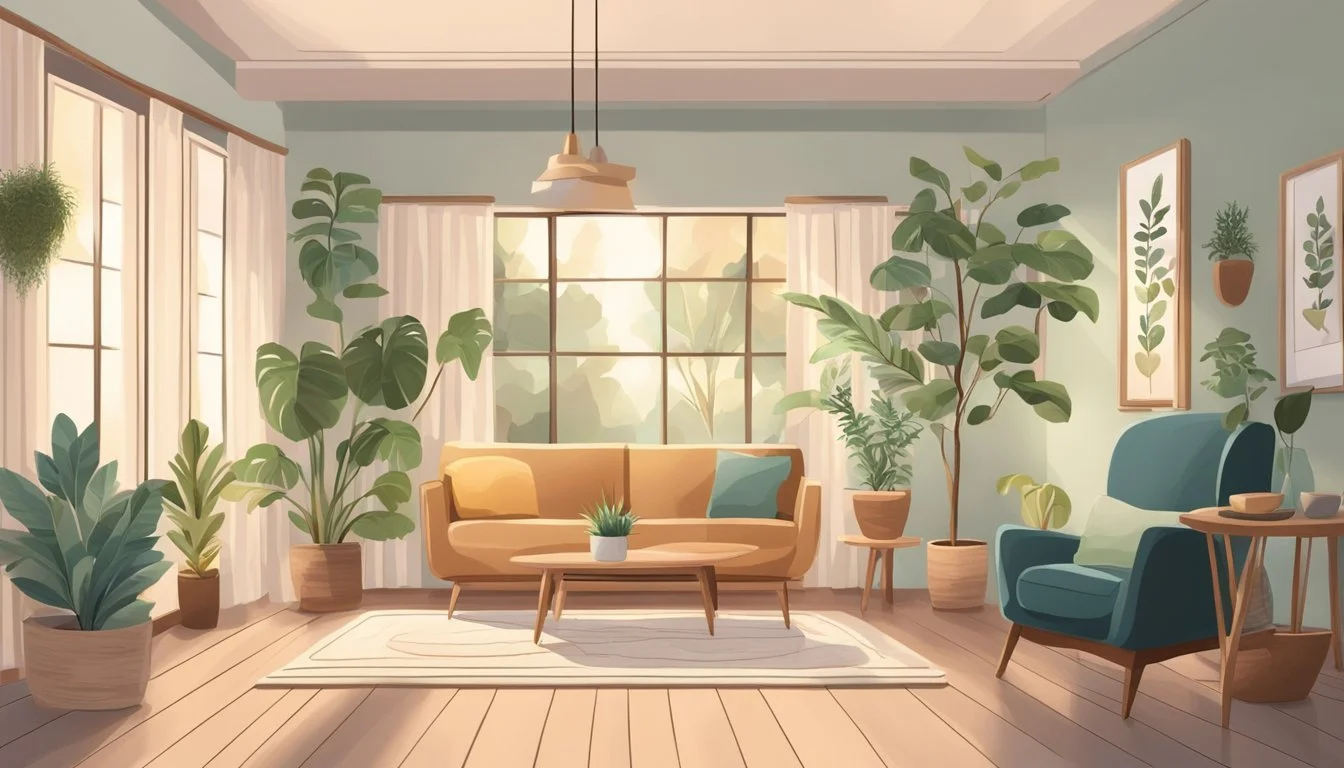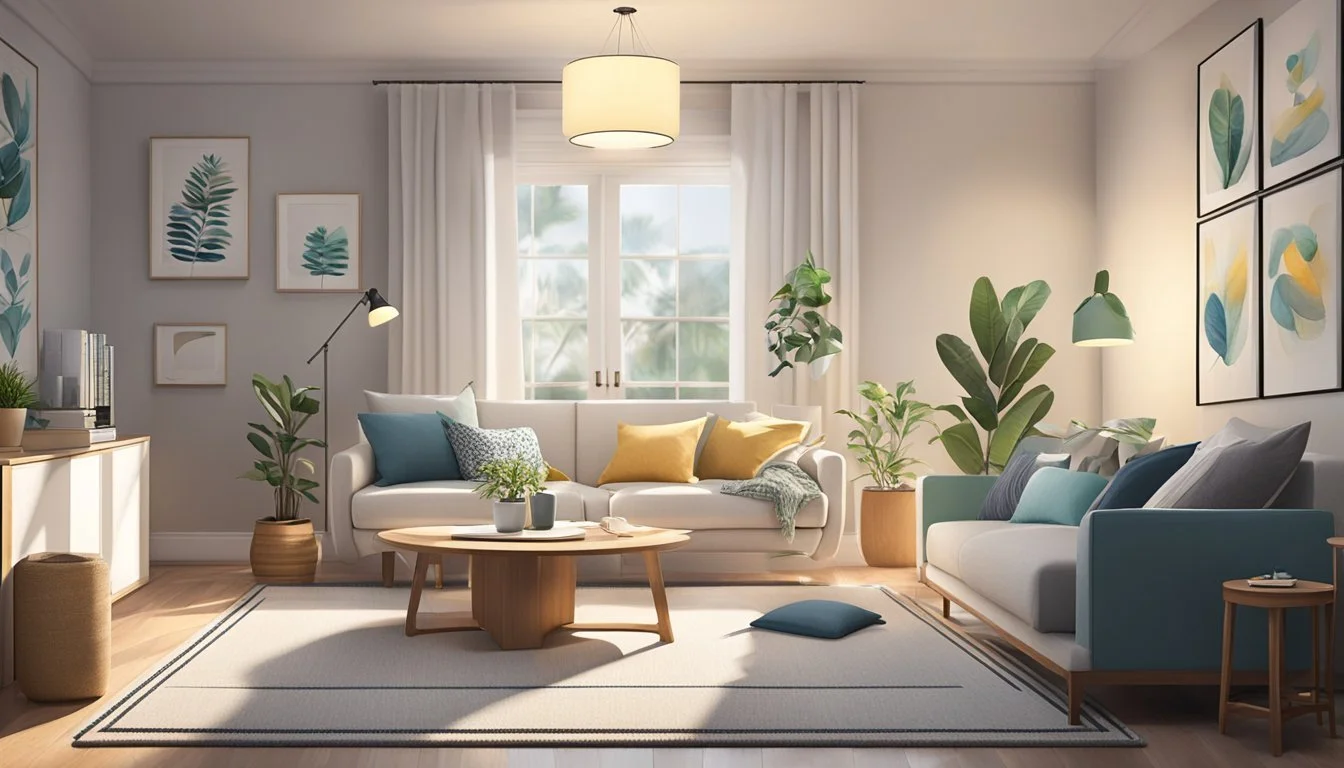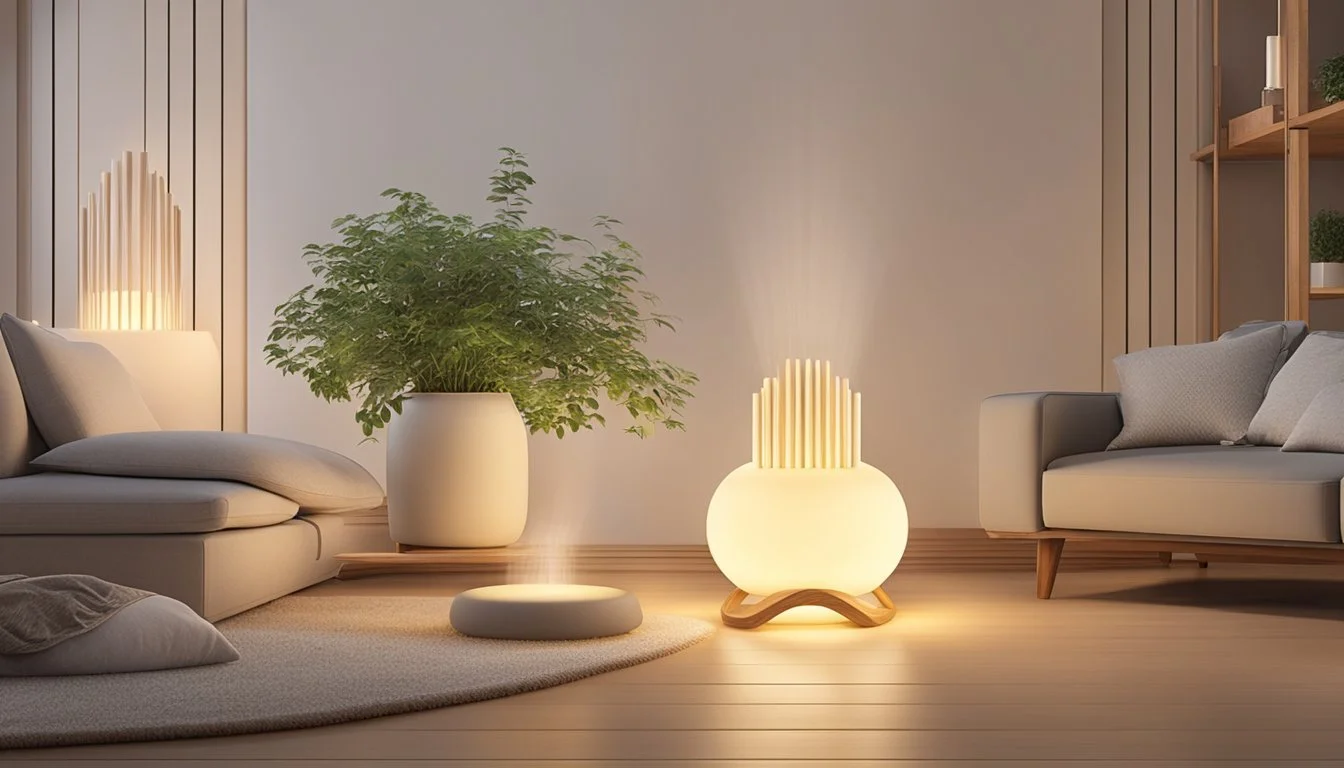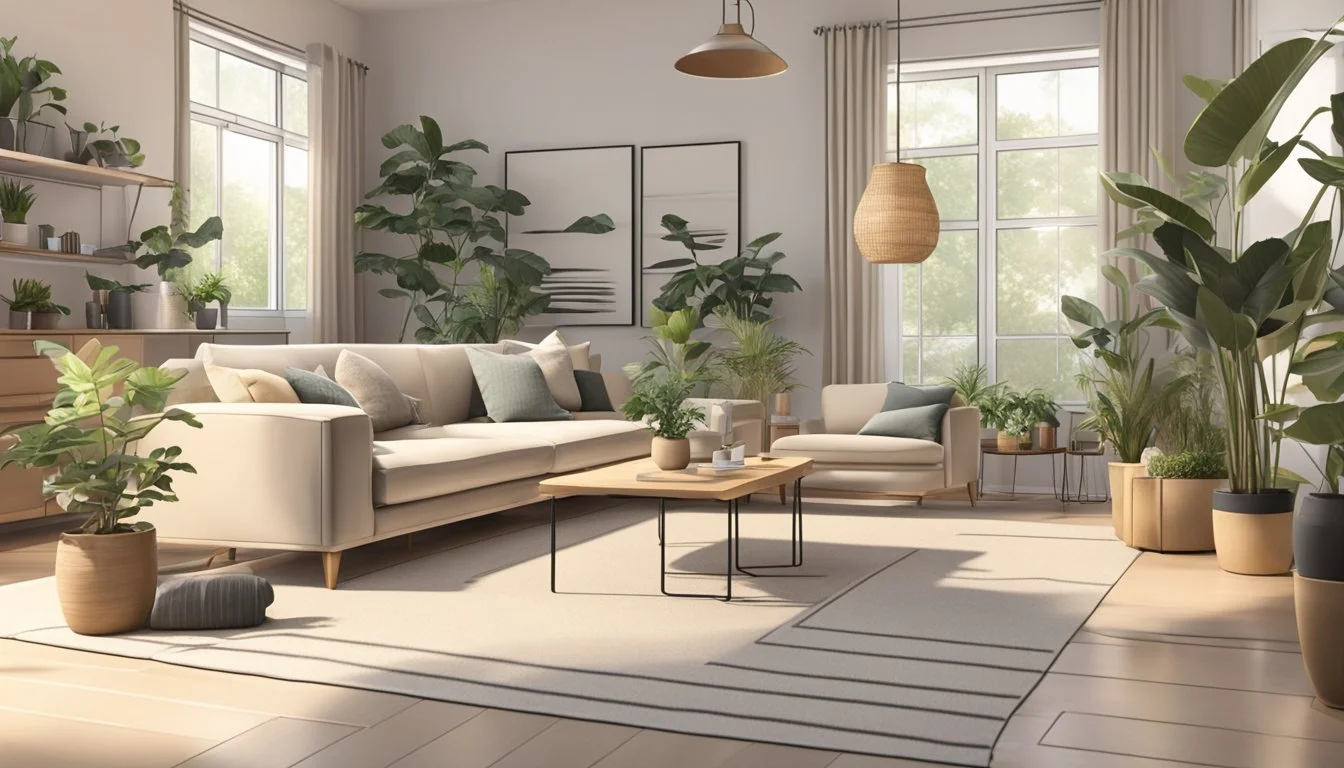11 Ways to Create an Anxiety-Friendly Home Environment
Simple Changes for a Calmer Living Space
Creating a home environment that supports mental well-being is essential for managing anxiety and stress. A thoughtfully designed living space can provide comfort, calm, and stability during challenging times. By implementing specific strategies and making intentional choices, individuals can transform their homes into anxiety-friendly sanctuaries.
The layout, decor, and overall atmosphere of a home can significantly impact emotional states and stress levels. From color choices to designated relaxation areas, various elements contribute to crafting a space that promotes peace and reduces anxiety triggers. This article explores practical ways to create an anxiety-friendly home environment that nurtures mental health and emotional resilience.
1) Use soft, warm lighting
Soft, warm lighting plays a crucial role in creating a calming atmosphere at home. Harsh overhead lights can increase anxiety and tension, while gentle illumination promotes relaxation.
Consider installing dimmer switches to adjust light levels throughout the day. In the evening, lower brightness to signal to your body that it's time to wind down.
Opt for warm-toned bulbs with a color temperature around 2700-3000K. These emit a cozy, golden glow reminiscent of candlelight or sunset.
Table lamps and floor lamps offer more control over lighting direction and intensity than ceiling fixtures. Place them strategically to create pools of soft light in living areas.
Salt lamps and flameless candles add a soothing ambiance without fire hazards. Their warm glow can help ease stress and promote a sense of peace.
For bedrooms, use blackout curtains to block outside light at night. This supports healthy sleep patterns, which are essential for managing anxiety.
2) Incorporate indoor plants
Indoor plants can significantly enhance the calming atmosphere of your home. They purify the air and create a soothing environment, helping to reduce anxiety and stress levels.
Choose low-maintenance plants like peace lilies, snake plants, or lavender. These species are known for their air-purifying qualities and don't require extensive care, making them ideal for beginners.
Place plants strategically around your living spaces. A few potted plants in the living room or bedroom can instantly transform the ambiance, bringing a touch of nature indoors.
Consider creating a small indoor garden in a sunny corner. This can serve as a peaceful retreat where you can tend to your plants and practice mindfulness.
Plants not only improve air quality but also add visual interest to your home. Their varying shades of green and different textures can create a serene, natural aesthetic.
Caring for plants can be a therapeutic activity. The act of watering, pruning, and nurturing them can provide a sense of purpose and accomplishment, further reducing anxiety.
3) Create a dedicated relaxation space
Designating a specific area in the home for relaxation can significantly reduce anxiety. This space should be free from digital distractions and clutter, allowing for mental decompression.
Choose a quiet corner or room and furnish it with comfortable seating options like a plush chair or floor cushions. Soft lighting, such as dimmable lamps or candles, can create a soothing ambiance.
Incorporate elements that appeal to the senses. Calming scents from essential oils or incense can promote relaxation. Soft textures like cozy blankets or plush rugs add comfort.
Include items that encourage mindfulness practices, such as meditation cushions, yoga mats, or a small table for journaling. Natural elements like plants or a small indoor fountain can enhance the peaceful atmosphere.
Personalize the space with meaningful objects or artwork that evoke positive emotions. This area can serve as a visual reminder to engage in regular relaxation practices and provide a grounding presence in times of stress.
4) Utilize calming colors
Colors can significantly impact mood and emotions. Incorporating soothing hues into your home decor can help create a more relaxing atmosphere and reduce anxiety.
Blues and greens are particularly effective for promoting calmness. These colors are associated with nature and can evoke feelings of tranquility and balance.
Soft, muted tones like pastels can also contribute to a serene environment. Light pinks, lavenders, and pale yellows can add a gentle touch to any room without overwhelming the senses.
Neutral colors such as beige, gray, and white can serve as a calming backdrop. These shades provide a clean, uncluttered look that can help minimize visual stress.
Consider painting walls in these calming colors or incorporating them through furniture, textiles, and decor items. Even small touches, like throw pillows or artwork, can make a difference in creating a more anxiety-friendly space.
Avoid bright, intense colors in areas meant for relaxation. While vibrant hues have their place, they may be too stimulating in spaces designed for rest and stress relief.
5) Implement white noise machines
White noise machines can be valuable tools for creating a calming atmosphere in an anxiety-friendly home. These devices produce consistent background sounds that help mask disruptive noises and promote relaxation.
Many people find white noise soothing and helpful for reducing stress and anxiety. The steady, ambient sound can create a sense of consistency and predictability in the environment.
White noise machines come in various forms, from standalone devices to smartphone apps. Some offer multiple sound options beyond traditional white noise, such as nature sounds or gentle melodies.
Placing white noise machines in bedrooms can improve sleep quality for those with anxiety-related sleep issues. They can also be beneficial in home offices or living areas to minimize distractions and create a more peaceful atmosphere.
The Dreamegg D3 Pro is a portable white noise machine that's particularly useful for travel. It allows users to maintain a consistent, anxiety-reducing soundscape even when away from home.
When selecting a white noise machine, consider factors such as sound variety, volume control, and portability. Experiment with different sounds and volume levels to find the most effective combination for reducing anxiety in your home environment.
6) Include comfortable furniture
Comfortable furniture plays a crucial role in creating an anxiety-friendly home environment. Soft, supportive seating can provide a sense of security and relaxation during stressful times.
Consider investing in a plush couch or armchair with ample cushioning. These pieces offer a cozy spot to unwind and decompress after a long day.
Ergonomic furniture is also important for reducing physical tension. An adjustable office chair with proper lumbar support can help alleviate stress-related back pain.
Adding items like bean bags, floor cushions, or a rocking chair can create additional comfortable seating options. These versatile pieces allow for different relaxation positions and preferences.
Don't forget about the bedroom. A quality mattress and supportive pillows are essential for promoting restful sleep, which is vital for managing anxiety.
Incorporating soft textures through throws, cushions, and area rugs can enhance the overall comfort of a space. These elements add warmth and create a more inviting atmosphere.
7) Install blackout curtains
Blackout curtains can significantly reduce external light and noise, creating a calming environment for those with anxiety. These curtains are made of dense, tightly woven fabric that blocks out light effectively.
To install blackout curtains, start by selecting a sturdy curtain rod that can support their weight. Position the rod brackets 4-6 inches above the window frame and extend them 3-6 inches beyond each side for better light blocking.
Mark the bracket positions with a pencil, using a level to ensure evenness. Drill holes at the marked spots and securely attach the brackets to the wall.
Hang the curtains using hooks or rings for a polished look. Ensure the curtains overlap in the middle and reach the floor or windowsill to maximize light-blocking efficiency.
For optimal results, consider layering blackout curtains with regular curtains or blinds. This combination can enhance both the room's aesthetics and its light-blocking capabilities.
By installing blackout curtains, individuals can create a darker, quieter space that promotes relaxation and may help reduce anxiety symptoms.
8) Organize your space effectively
A clutter-free environment can significantly reduce anxiety levels. Start by decluttering and finding a designated place for each item. This process creates a sense of order and control, which can be calming for those with anxiety.
Implement storage solutions that work for your specific needs. Use boxes, baskets, or shelving units to keep items neatly tucked away. Clear surfaces can help create a more peaceful atmosphere and reduce visual stimuli that may trigger anxiety.
Consider implementing a system for organizing paperwork and important documents. File cabinets or labeled folders can help keep these items easily accessible while maintaining a tidy appearance.
Regularly assess your belongings and donate or discard items you no longer need. This practice not only keeps your space organized but also promotes a sense of letting go, which can be therapeutic for anxiety sufferers.
Remember that organization is an ongoing process. Set aside time each week to tidy up and maintain your organized space. This routine can provide structure and predictability, which are beneficial for managing anxiety.
9) Display calming artwork
Incorporating soothing artwork into the home can significantly impact the overall atmosphere and contribute to anxiety reduction. Selecting pieces with calming colors like blues, greens, and pastels can help create a serene environment.
Nature-themed art, such as landscapes, seascapes, or botanical prints, often evokes feelings of tranquility and can transport viewers to peaceful settings. Abstract art with gentle shapes and muted tones can also promote relaxation.
Consider displaying black and white photographs or prints, as these can add a sense of calm and simplicity to a space. Minimalist art with clean lines and uncluttered compositions may appeal to those who find visual simplicity soothing.
When choosing frames, opt for simple designs in neutral colors or natural wood tones to maintain a peaceful aesthetic. Canvas prints offer a frameless option that can blend seamlessly into the decor.
Positioning artwork thoughtfully is key. Create a focal point in each room with a carefully chosen piece, allowing the eyes to rest on something pleasant and calming. Grouping smaller artworks together can also create an engaging yet tranquil visual display.
10) Add essential oil diffusers
Essential oil diffusers can create a calming atmosphere in the home. These devices disperse aromatic oils into the air, potentially helping to reduce anxiety and stress.
Popular essential oils for relaxation include lavender, bergamot, and frankincense. Lavender has a soothing scent that may alleviate feelings of anxiety and promote better sleep.
Bergamot oil has a citrusy aroma that can help reduce stress hormones. Frankincense offers a woody, earthy scent that may encourage relaxation and grounding.
Diffuser blends can be customized to suit individual preferences. A combination of lavender, frankincense, and orange oils creates a calming environment that promotes tranquility.
Peppermint oil can provide both calming and energizing effects, making it versatile for different needs. Its fresh scent can be invigorating when a mood boost is needed.
Placing diffusers in bedrooms, living areas, or home offices can help create anxiety-friendly spaces throughout the home. Regular use of essential oils may contribute to a more relaxed atmosphere overall.
11) Practice minimalism
Embracing minimalism can significantly reduce anxiety in the home environment. By decluttering and simplifying living spaces, individuals create a sense of calm and order. Removing excess possessions allows for easier cleaning and maintenance, freeing up time and mental energy.
Minimalism encourages intentional living, focusing on items that truly add value. This approach helps eliminate visual distractions and creates a more peaceful atmosphere. A clutter-free space can promote clearer thinking and reduce feelings of overwhelm.
Adopting minimalist principles extends beyond physical objects. It can involve simplifying schedules, commitments, and digital spaces. This holistic approach to minimalism can lead to reduced stress levels and improved mental well-being.
Implementing minimalism doesn't mean getting rid of everything. It's about curating a space that supports emotional balance and reduces unnecessary stimuli. Start small by decluttering one area at a time, gradually working towards a more minimalist home environment.
Remember, the goal is to create a space that feels calming and supportive. Focus on keeping items that bring joy or serve a clear purpose, letting go of those that contribute to anxiety or stress.
Understanding Anxiety and Its Triggers
Anxiety manifests differently for each person, but certain factors in the home environment can contribute to or alleviate symptoms. Recognizing common triggers and understanding how living spaces impact mental health are key steps in creating an anxiety-friendly home.
Common Anxiety Triggers at Home
Clutter and disorganization often exacerbate anxiety symptoms. Piles of laundry, stacks of papers, or crowded surfaces can create a sense of chaos and overwhelm.
Loud or unexpected noises like slamming doors, barking dogs, or sudden alarms may startle those with anxiety and increase stress levels.
Bright or harsh lighting can be overstimulating and contribute to feelings of unease. Flickering lights or glare from screens may be particularly bothersome.
Certain scents, while pleasant to some, can trigger anxiety in others. Strong cleaning products, air fresheners, or cooking odors may cause discomfort.
Crowded or cramped spaces can induce claustrophobia or a sense of being trapped, heightening anxiety for some individuals.
The Impact of Home Environment on Mental Health
A calm, organized living space promotes relaxation and reduces stress. Soft, neutral colors and natural elements like plants can create a soothing atmosphere.
Proper lighting significantly affects mood and anxiety levels. Natural light exposure during the day helps regulate circadian rhythms and improve overall well-being.
Comfortable furniture and ergonomic setups reduce physical tension, which can alleviate anxiety symptoms.
Designated spaces for relaxation and self-care activities, such as reading nooks or meditation corners, provide important refuges from daily stressors.
Air quality and temperature control contribute to physical comfort, which in turn supports mental health. Proper ventilation and consistent temperatures help maintain a stable environment.
Designing a Calming Living Space
Creating a serene living space involves strategic use of color and lighting. These elements play crucial roles in shaping mood and reducing anxiety.
Color Psychology and Mood
Soft, neutral colors promote relaxation and calmness. Light blues and greens evoke nature, fostering tranquility. Pale yellows can add warmth without overstimulation.
Avoid bold, bright colors in large amounts as they may increase anxiety. Instead, use them sparingly as accents. Incorporate natural textures like wood and stone to enhance the soothing effect.
Consider painting walls in muted tones or using wallpaper with subtle patterns. Choose furniture and decor in complementary, subdued shades to maintain a cohesive, peaceful atmosphere.
The Role of Lighting
Proper lighting significantly impacts mood and anxiety levels. Natural light is ideal for reducing stress and improving overall well-being. Maximize sunlight by keeping windows unobstructed and using sheer curtains.
For artificial lighting, opt for warm, soft light sources. Avoid harsh overhead lights. Instead, use table lamps, floor lamps, and wall sconces to create a gentle, diffused glow.
Dimmer switches allow for adjustable lighting to suit different times of day and activities. Consider salt lamps or LED candles for a calming ambiance. Blue light-filtering bulbs can promote better sleep in bedroom areas.
Incorporating Nature and Biophilic Design
Bringing nature indoors can significantly reduce anxiety and create a calming atmosphere. This approach, known as biophilic design, focuses on integrating natural elements into living spaces.
Benefits of Indoor Plants
Indoor plants offer numerous advantages for mental health and well-being. They purify the air by removing toxins and increasing oxygen levels. This improved air quality can lead to better sleep and reduced stress.
Plants also add visual interest and natural beauty to a space. Their presence can lower blood pressure and heart rate, promoting relaxation. Some effective anxiety-reducing plants include lavender, jasmine, and snake plants.
Caring for plants can provide a sense of purpose and accomplishment. This nurturing activity can be particularly beneficial for those struggling with anxiety or depression.
Creating a Connection with Nature
Biophilic design extends beyond just adding plants. It involves incorporating natural materials, colors, and patterns into the home environment. Wood and stone elements can bring warmth and texture to a space.
Natural light plays a crucial role in biophilic design. Maximize sunlight exposure by keeping windows unobstructed and using sheer curtains. If natural light is limited, full-spectrum light bulbs can mimic sunlight's effects.
Water features, such as small fountains or aquariums, can introduce soothing sounds and movement. These elements can create a calming focal point in a room.
Nature-inspired art and photography can also foster a connection with the outdoors. Choose images of landscapes, plants, or animals to bring natural scenery indoors.







